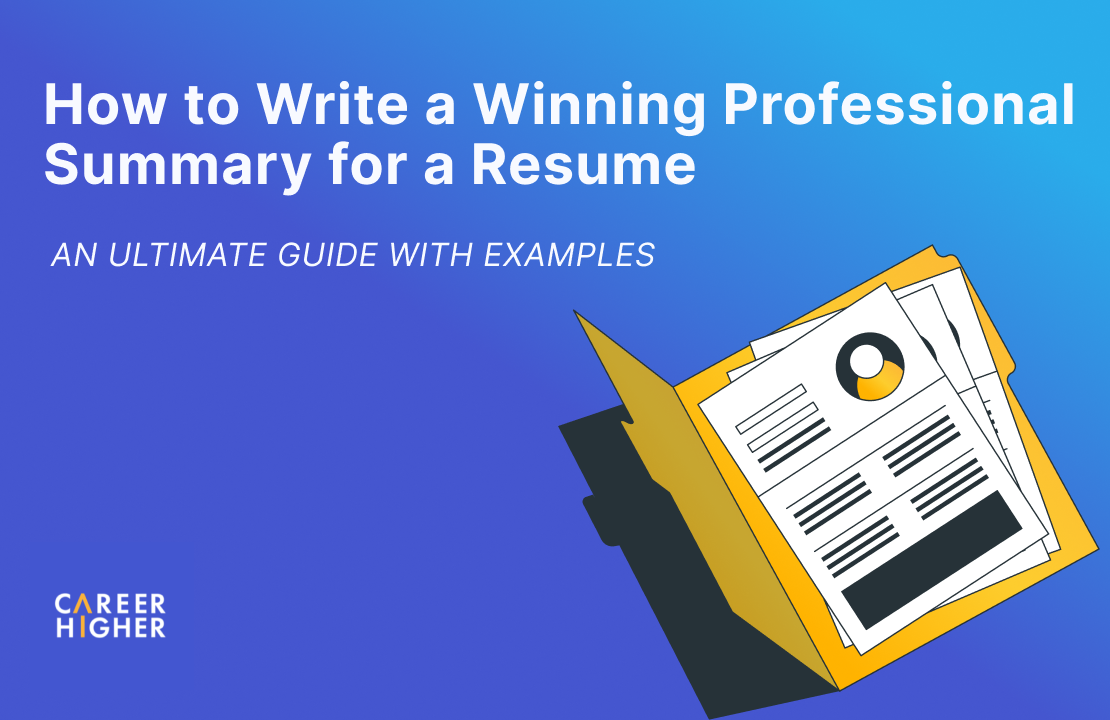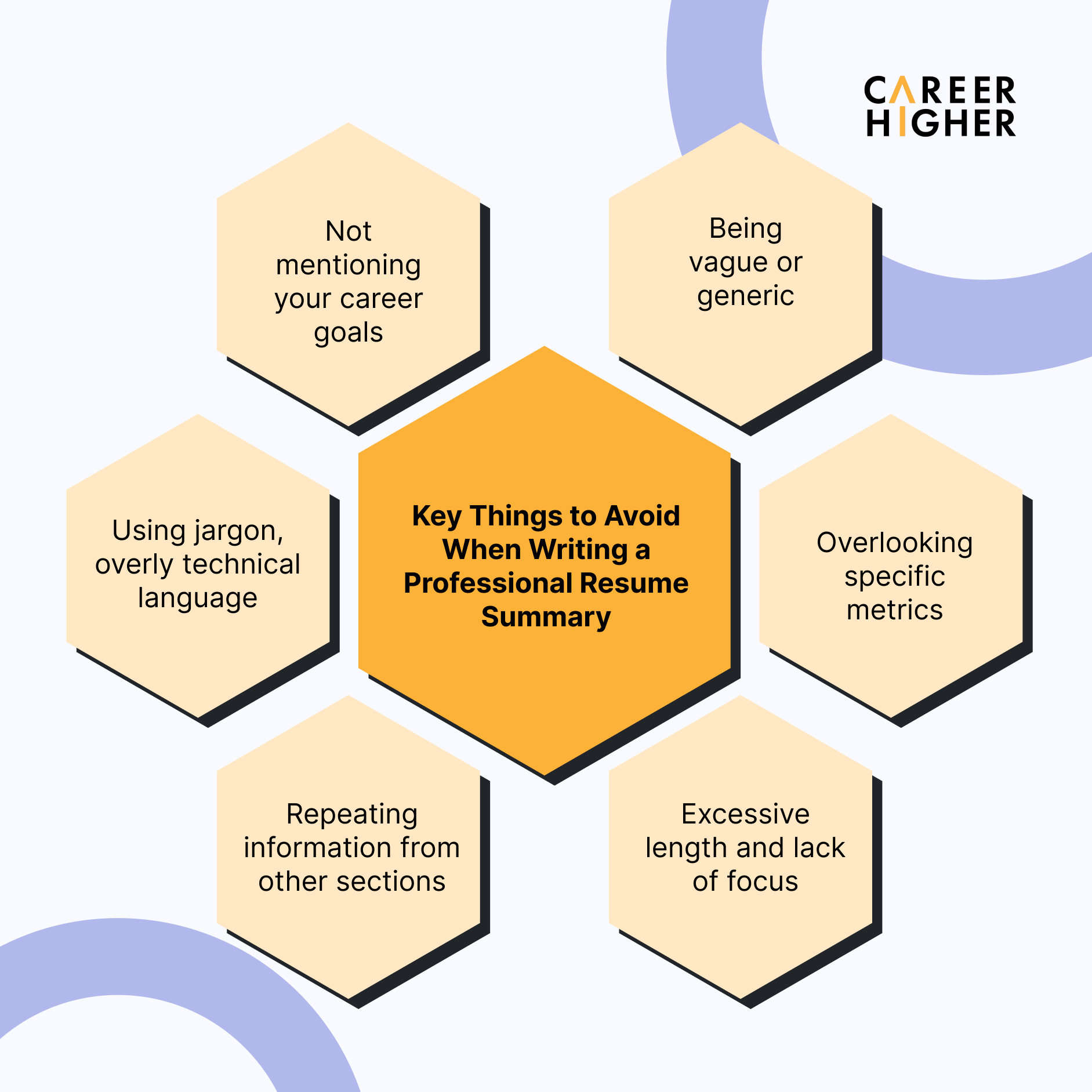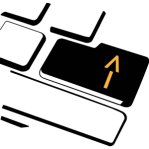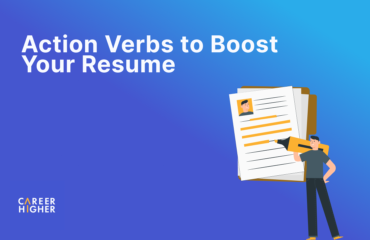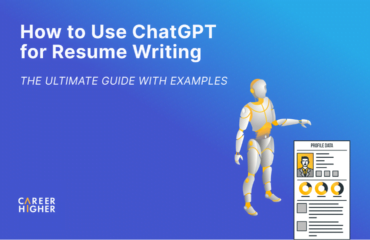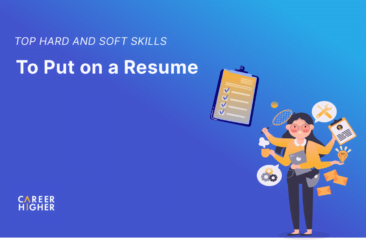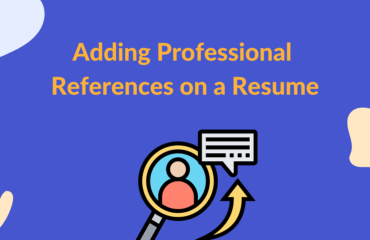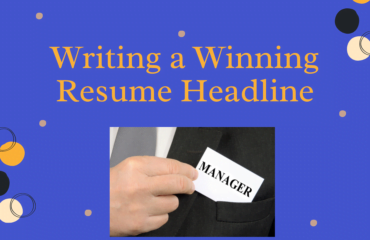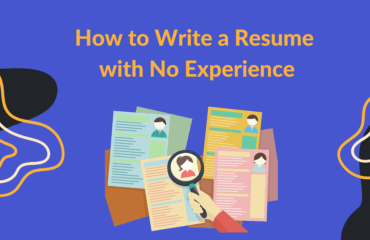Table of Contents
In today’s fast-paced job market, crafting a compelling professional summary for your resume is crucial in grabbing the attention of potential employers. According to Indeed, employers spend an average of just six to seven seconds reviewing each resume, making it vital to make a strong first impression quickly. This guide is designed to help you do just that.
Here, we’ll show you how to perfectly sum up your work experience, skills, and achievements. First, we’ll go over the difference between a professional summary and an objective, why a good summary is so important, and the must-have parts of a summary. Then, we’ll list some easy tips and tricks to make yours shine. Finally, we’ll share some top-notch examples to get you started. So, let’s get going and help you take that next big step in your career!
Difference Between a Professional Summary and Objective
A professional summary and an objective both aim to give the employer a quick snapshot of the candidate’s qualifications. However, they differ significantly in their approach. A professional summary showcases the candidate’s most notable achievements and qualifications. On the other hand, an objective focuses on the applicant’s career goals and what they seek in a new position.
When crafting your resume, opting for a professional summary over an objective is advisable. This is because a professional summary showcases your unique value proposition, giving employers a glimpse of how you can contribute to their organization. In contrast, an objective tends to be more self-focused, highlighting what you hope to achieve rather than what you bring to the table. A compelling professional summary can thus, make you stand out and increase your chances of landing your dream job.
Importance of a Professional Summary on a Resume
In today’s competitive job market, capturing a recruiter’s interest within the first few seconds is critical, and that’s precisely what a well-crafted professional summary accomplishes. This succinct section highlights your top qualifications and achievements, immediately showcasing your value to potential employers. It serves as a handshake, introducing you before they dive deeper into your career story.
Beyond mere introductions, the professional summary amplifies your unique selling points. In an era where hiring managers often juggle hundreds of applications, this section helps your resume rise above the noise, acting as a beacon to pinpoint your suitability for the role. Think of it as your personal brand statement, one that could be a key factor in propelling you to the interview stage.
Key Components of an Effective Professional Summary
In your professional summary, it is important to focus on highlighting the main aspects that define your professional identity. In this article section, we’ll go through these key parts to help you create a summary that really makes an impact.
Identify your present role or the position that closely aligns with the job you’re aiming for. This sets the stage, giving recruiters a clear understanding of your professional standing or aspirations.
2) Years of experience
Indicate how long you’ve been honing your skills in your field. This tells employers at a glance the depth of your industry knowledge and expertise. However, it’s not just about the number but more about showcasing your journey and dedication to your profession.
3) Relevant industry experience
Specify your experience related to the industry of your target job. This highlights your familiarity with the sector’s dynamics and proves your competence in navigating its challenges.
4) Achievements that are significant to the target job
Showcasing your major accomplishments, particularly those that had a measurable impact on your organization or clients, provides solid evidence of your capabilities. Include metrics or specific numbers to give recruiters a tangible sense of your contributions.
5) Target career direction
Share your professional trajectory and future aspirations. This demonstrates your commitment to growth and highlights the alignment between your career path and the prospective job.
What Makes a Good Professional Summary for a Resume
Now that we’ve covered the essentials, let’s dive into what makes a good professional summary. Remember, your goal is to encapsulate your most valuable attributes and communicate them in a way that resonates with potential employers. In the following paragraphs, we’ll explore this concept further, offering samples of both effective and less effective professional summaries to guide you in crafting your own.
Example #1
Bad Professional Summary
“Experienced software engineering leader with good experience managing teams and projects. Familiar with various programming languages and software development practices. Strong track record of delivering projects on time. Looking for a challenging role where I can use my skills. Enthusiastic about joining a new team and contributing to company success.”
This summary is too vague and generic, lacking specific accomplishments, technical expertise, or leadership qualities that are expected from a VP of Software Engineering. It doesn’t differentiate the candidate from others or convey a unique professional identity.
Good Professional Summary
“VP of Software Engineering with 15+ years of experience leading software development, driving engineering efforts, and providing technical consulting for various Fortune 500 corporations. Have a proven track record of success in driving multimillion-dollar system acquisition and integration with zero disruption, generating $2M cost savings, and improving service quality and software product stability, reliability, and performance through expert bug fixes, outage resolution, feature enhancements, and timely upgrades. Looking for a challenging Chief Technology Officer role in one of the industry giants.”
On the other hand, this summary effectively showcases specific achievements and quantifiable results. It clearly states the candidate’s extensive experience and specialized role, targeting a specific position (Chief Technology Officer). This summary demonstrates a high level of expertise and a clear value proposition, making it compelling for potential employers.
Example #2
Bad Professional Summary
“Seasoned in handling client relationships and boosting sales numbers. Skilled in team collaboration and maintaining client satisfaction. Proficient in various client management strategies. Demonstrated capability in exceeding sales goals and increasing client base. Seeking a dynamic role to further develop skills in a new environment. Keen to contribute to team success in a progressive company.”
This summary lacks depth and specificity. It broadly states skills and accomplishments without quantifying their impact, making it difficult to gauge the candidate’s effectiveness. The use of generic phrases like “seasoned” and “proficient” doesn’t showcase any unique skills or achievements, making the candidate blend in rather than stand out in a competitive field.
Good Professional Summary
“Client Partnership Head with 16+ years of experience in cultivating, managing, and growing key client relationships for various multinational organizations. Demonstrated success in securing new partnerships with globally recognized brands and industry giants, generating a 60% boost in gross margins, surpassing revenue targets by >150%, and deploying up to $80M worth of digital solutions that enabled clients to achieve greater efficiency and increased profitability. Looking for a challenging VP of Client Partnerships role in an established company.”
In contrast, this good summary effectively highlights specific, quantifiable achievements. It clearly demonstrates the candidate’s extensive experience and success in building profitable client relationships and deploying significant digital solutions. This summary stands out by detailing the candidate’s direct impact on their organizations, positioning them as a highly competent and results-driven professional, suitable for a VP of Client Partnerships role.
Tips & Tricks for Writing a Good Professional Summary
To assist you in crafting a standout professional summary, here are the best tips that we’ve proven effective in communicating your most valuable attributes to potential employers.
1) Customize for each job application
Tailoring your professional summary to each job application is crucial. Analyze the job description and identify keywords and skills that the employer is seeking. By reflecting these in your summary, you make it clear that you’re not just a great candidate, but the right candidate for this specific role.
2) Emphasize quantifiable achievements
Numbers speak louder than words. Whenever possible, include quantifiable achievements in your summary. This could be percentages, dollar amounts, or other figures that demonstrate your impact in previous roles.
3) Keep it concise and focused
Your summary should be a brief yet impactful snapshot of your professional life. For the length, aim for 3 to 5 sentences that concisely convey your experience, achievements, and career goals. Avoid filler words and get straight to the point, ensuring every word contributes to your overall message.
4) Showcase your soft skills
While technical skills are vital, don’t overlook your soft skills. Qualities like leadership, communication, and problem-solving are highly valued across industries. Mentioning these can illustrate your ability to thrive in various work environments and collaborate effectively with teams.
5) Include relevant keywords
In today’s digital age, resumes are often first scanned by Applicant Tracking Systems (ATS) before reaching a human. Using relevant keywords from the job description ensures your resume passes these initial screenings and reaches the employer.
6) Use strong adjectives and action verbs
Using strong adjectives and action verbs in your professional summary can make it more dynamic and engaging. Avoid overused terms or phrases like “hardworking” or “team player”. Instead, select words that vividly describe your skills and achievements, bringing your professional story to life. This approach helps create a compelling and memorable narrative.
7) Write in first person, omitting pronouns
Writing in the first person without using pronouns gives your professional summary a direct, personal touch while maintaining a professional tone. This style keeps the focus on your achievements and skills, making the summary more relatable and less formal. It creates a strong, confident presentation of your professional identity.
8) End with your career goals
Concluding your professional summary with your career goals links your current skills and experiences to your future aspirations. This shows how your professional journey aligns with the role and the company’s direction. It also shows your ambition and forward-thinking mindset.
Good Professional Resume Summary Examples
Here are a few more examples of effective professional summaries for inspiration.
Director of Business Development with 12+ years of experience identifying, pursuing, and securing new business opportunities for leading companies across the blockchain and Web 3 sectors. Demonstrated success in expanding market presence, generating high-quality leads, securing additional business with industry players, and driving $16M in sales and revenue growth. Expert in designing, implementing, and managing high-impact marketing campaigns using Web 3 and blockchain technologies. Looking for a challenging VP of Business Development role within the blockchain space.
Graphic and Motion Designer with 14+ years of experience creating captivating visual designs and motion graphics that support the marketing efforts of multinational corporations in Europe. Have a proven track record of success in enhancing brand engagement by 73%, elevating the user experience, and expediting marketing and campaign effectiveness across 8 different platforms. Adept at applying graphic design principles to video production using visual effects, animation, and cinematic techniques. Looking for a challenging Graphic Design Lead role in an established organization.
Director of Strategic Initiatives with 10+ years of experience driving all aspects of the business, including strategic planning, operations, product management, project delivery, and business development. Demonstrated success in building and scaling a company from inception to a multimillion-dollar revenue-generating business, driving large-scale projects to completion, improving operational processes for efficiency and productivity, and launching new products and initiatives that drive consistent growth. Looking for a challenging Director of Strategic Initiatives role in a reputable company.
Project Coordinator with 11+ years of experience and a proven track record of managing business-critical projects for leading organizations, including a multimillion-dollar gaming company. Demonstrated success in achieving KPI goals, reducing player churn by 94%, and completing a total of 15 key projects within quality, time, and budget constraints. A Certified Project Management Professional candidate with an in-depth understanding of applying Agile and Scrum frameworks to optimize project success. Looking for a challenging Commercial Project Coordinator role in an established tech/gaming company.
Compassionate Corporate Wellness Manager with 5+ years of hands-on experience leading corporate wellness programs that promote the health and well-being of hundreds of employees in top institutions. Have a track record of success in delivering 50+ wellness webinars and introducing a holistic employee wellbeing program with an above-average utilization rating. Adept at identifying the unique needs of the workforce to continuously evolve wellness strategy that provides physical, mental, emotional, legal, financial, and family and work matters support to all employee levels. Looking for a challenging role as a Senior Corporate Wellness Manager with a multinational wellness company.
Regional Sales Vice President with 20+ years of experience managing the sales operations of both startup and established corporations, including top global and Fortune 500 firms. Have a proven track of success in delivering record-setting 8-digit sales figures, achieving market share leadership in several countries, acquiring new high-profile clients, and exceeding targets by up to $58M by building high-performing sales teams. Looking for a challenging Senior Vice President, Sales role in an established company.
General Manager with 15+ years of experience directing the development and execution of high-impact initiatives that drive sales, new business, strategic partners, and revenue growth for various top 50 Fortune 500 companies. Highly recognized for consistently exceeding sales and revenue targets by >100%, securing key partnerships with well-known brands and industry leaders, and growing organizations into multimillion-dollar businesses in both established and emerging markets. Looking for a challenging CEO role in an established corporation.
Product Manager with 10+ years of experience leading the product lifecycle, from ideation and market research to customer development, launch, and consistent growth. Equipped with consistent success in deploying innovative products, increasing product usage by up to 66%, boosting customer engagement, and achieving an 84% increase in sales and revenue. Looking for a challenging PLM Specialist role in a reputable organization.
Executive IT Director with 18+ years of experience scaling teams and shaping technology vision, strategy, and roadmap for multiple tech industry giants and Fortune 500 firms. Demonstrated success in boosting operational efficiency by >100%, elevating IT infrastructure capabilities, reducing security incidents and breaches by up to 97%, improving business resilience during system outages, and generating multimillion-dollar cost savings through new system adoption and technological optimization. Looking for a challenging Chief Technology Officer (CTO) role in a top tech company.
Head of Global Distribution Operations with 13+ years of wide-ranging experience leading multiple business functions encompassing operations, finance, accounting, HR, CRM, and M&A. Highly successful in driving the global distribution operations for Fortune 500 corporations, reducing logistics and operational costs by up to 67%, generating $34M revenue growth, and boosting productivity by up to 90%. Looking for a challenging VP, Global Distribution Operations role in an established organization.
Founder and Business Executive with extensive expertise in providing high-quality healthcare products and services to a wide spectrum of medical professionals and institutions. Recognized visionary leader with a proven track record of success in building and scaling an organization from the ground up into a $7500M business, dedicated to offering the best patient-centered medical care in the region. Highly experienced in strategic leadership, financial management, and operational oversight contributing to the exponential growth of various subsidiaries and associated organizations in the healthcare sphere. Passionate about driving excellence in healthcare service delivery and improving patient outcomes across Australia.
Account Executive with 17+ years of experience building, managing, and growing relationships with key customers and business partners for leading technology and Fortune 500 organizations. Have a proven track record of success in achieving customer satisfaction goals, building high-quality pipelines of business prospects, exceeding sales targets by >73%, securing 8-figure contracts with industry giants, and generating multimillion-pound revenue increases. Looking for a challenging Account Manager role in an established technology organization.
A well-crafted professional summary is your ticket to making a lasting impression on potential employers. It’s not just a collection of your experiences but more of a reflection of your professional journey. Focus on tailoring your summary to each job, highlighting quantifiable achievements, and showcasing both your hard and soft skills. Remember to keep it concise, engaging, and reflective of your career goals. Your professional summary isn’t just about where you’ve been but also a compelling preview of where you can go with your next role. Now, armed with these insights, you’re ready to craft a summary that captures attention and opens doors to new opportunities. But if you still need assistance, we’re more than ready to help.
